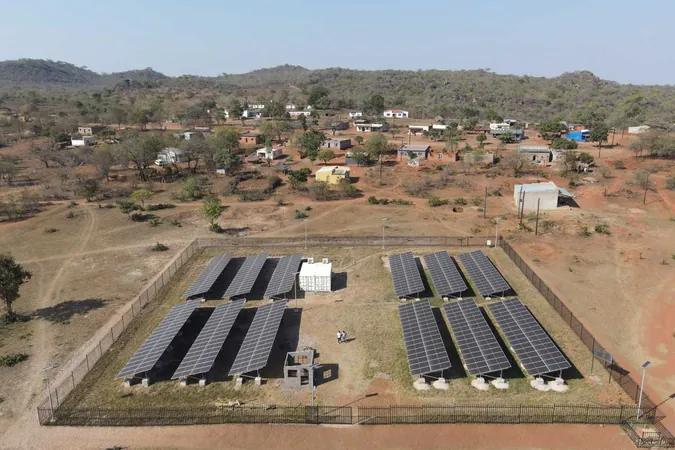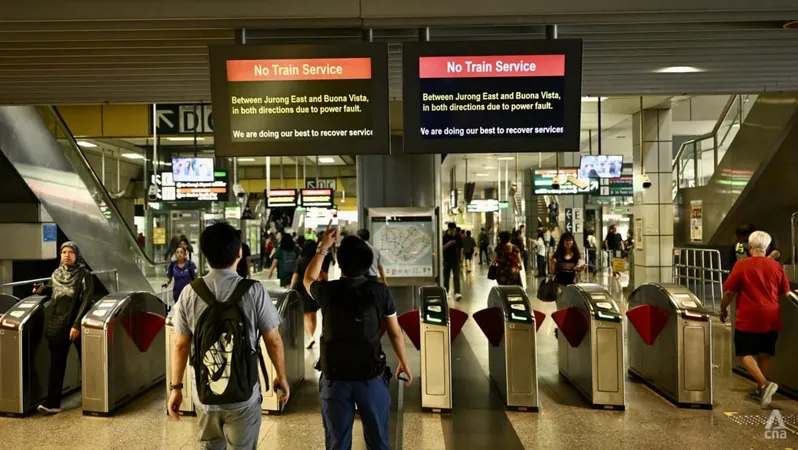
Brightening Healthcare: How Solar Power Revolutionized a Remote Zimbabwean Clinic
2024-09-27
In the heart of southeastern Zimbabwe, at Hakwata Clinic in Chipinge, nurse-aide Tebitha Moyo greets mothers and their bundled infants, marking her 32 years of service in this challenging environment. Although many facets of this rural clinic have remained unchanged, a groundbreaking development has recently transformed healthcare delivery here—solar power.
As Moyo meticulously inputs patient data into a newly acquired laptop, she reflects on how just a year ago, such technology was unimaginable. Hakwata Clinic, previously cut off from the national electrical grid due to its isolated location amid rugged hills, had relied on outdated analog methods for record-keeping. This all changed in 2023 when a 200-kilowatt solar mini-grid was installed through a collaboration between the United Nations Development Programme (UNDP), the state-owned Rural Electrification Agency, and funding from the UK's Foreign, Commonwealth and Development Office (FCDO).
Uninterrupted electricity now illuminates the clinic, powering essential equipment like laptops, lights, and critically, vaccine refrigerators—an upgrade that has significantly enhanced the healthcare services they can provide.
From Darkness to Light: A Historical Perspective
Moyo recalls the difficulties faced in the early 2000s when vaccines were transported from a distant facility with electricity in Checheche, located 32 kilometers away. “This hampered our vaccination efforts,” she explains, adding that during nighttime, clinic staff relied on candles and torches which posed a safety risk while attending to women in labor or treating patients. The initial attempts to keep vaccines cool relied on gas-powered fridges, which were unreliable, and small solar-powered rigs that could barely manage during cloudy weather.
Now, with reliable refrigeration, Hakwata can extend its immunization outreach. Monthly programs send staff into remote communities, allowing mothers to access vaccines that were previously unattainable due to the clinic's location.
A Transformative Impact on Healthcare Workers and Families
The installation of the solar mini-grid has not only revolutionized services at Hakwata but has also improved the living conditions for staff members. Joyce Mayanga, a nurse-aide at the clinic for three years, noted, "Many people did not want to come and work here. But this has changed in the past few months.” Her excitement is palpable as she mentions how now, staff can charge their devices, capture data on immunization programs, and enjoy modern conveniences like television at home.
Powered by 416 solar panels and featuring three inverters with lithium batteries that last up to 15 years, this solar mini-grid represents more than just an upgrade in technology; it symbolizes hope and connection for both healthcare workers and the community they serve.
Dr. Jo Abbot, deputy ambassador and development director at the British Embassy in Harare, emphasized the significance of sharing energy across communities. “This is a UK priority,” she affirmed, highlighting an investment of over $16 million in similar infrastructure, allowing Hakwata Clinic to now provide services to over 12,000 people.
Solar Power vs. Grid Failures: A Broader Context
As Hakwata Clinic thrives, many areas in Zimbabwe still suffer from severe power shortages with rolling blackouts that can exceed 12 hours. The primary hydro power facility at Lake Kariba faces capacity reductions due to water shortages. Consequently, large medical facilities, including Parirenyatwa Hospital, have resorted to using backup solar systems to maintain operation.
Since 2016, UNDP has been facilitating the installation of solar power systems across various clinics in Zimbabwe. Aiming to fill significant gaps in power supply, these solar installations now provide essential electricity to over 1,053 clinics nationwide, comprising 58% of the total healthcare facilities.
According to Dr. Ayodele Odusola of UNDP, “This is just one of many projects. The solar systems are not just backups; they are now primary power sources, essential for preserving medications and facilitating efficient healthcare delivery.”
In conclusion, the successful implementation of solar energy at Hakwata Clinic exemplifies a significant leap toward self-sufficient healthcare in rural Zimbabwe. Moyo, although unable to disclose specific vaccination data, beams with pride at the uplift in immunization rates since the clinic’s solar upgrade. “Our outreach programs are making a real difference,” she affirms, marking a bright future for healthcare in the region.
This solar-powered revolution demonstrates not only the importance of access to energy but highlights the potential for similar initiatives to significantly enhance healthcare in remote and underserved communities worldwide.


 Brasil (PT)
Brasil (PT)
 Canada (EN)
Canada (EN)
 Chile (ES)
Chile (ES)
 España (ES)
España (ES)
 France (FR)
France (FR)
 Hong Kong (EN)
Hong Kong (EN)
 Italia (IT)
Italia (IT)
 日本 (JA)
日本 (JA)
 Magyarország (HU)
Magyarország (HU)
 Norge (NO)
Norge (NO)
 Polska (PL)
Polska (PL)
 Schweiz (DE)
Schweiz (DE)
 Singapore (EN)
Singapore (EN)
 Sverige (SV)
Sverige (SV)
 Suomi (FI)
Suomi (FI)
 Türkiye (TR)
Türkiye (TR)